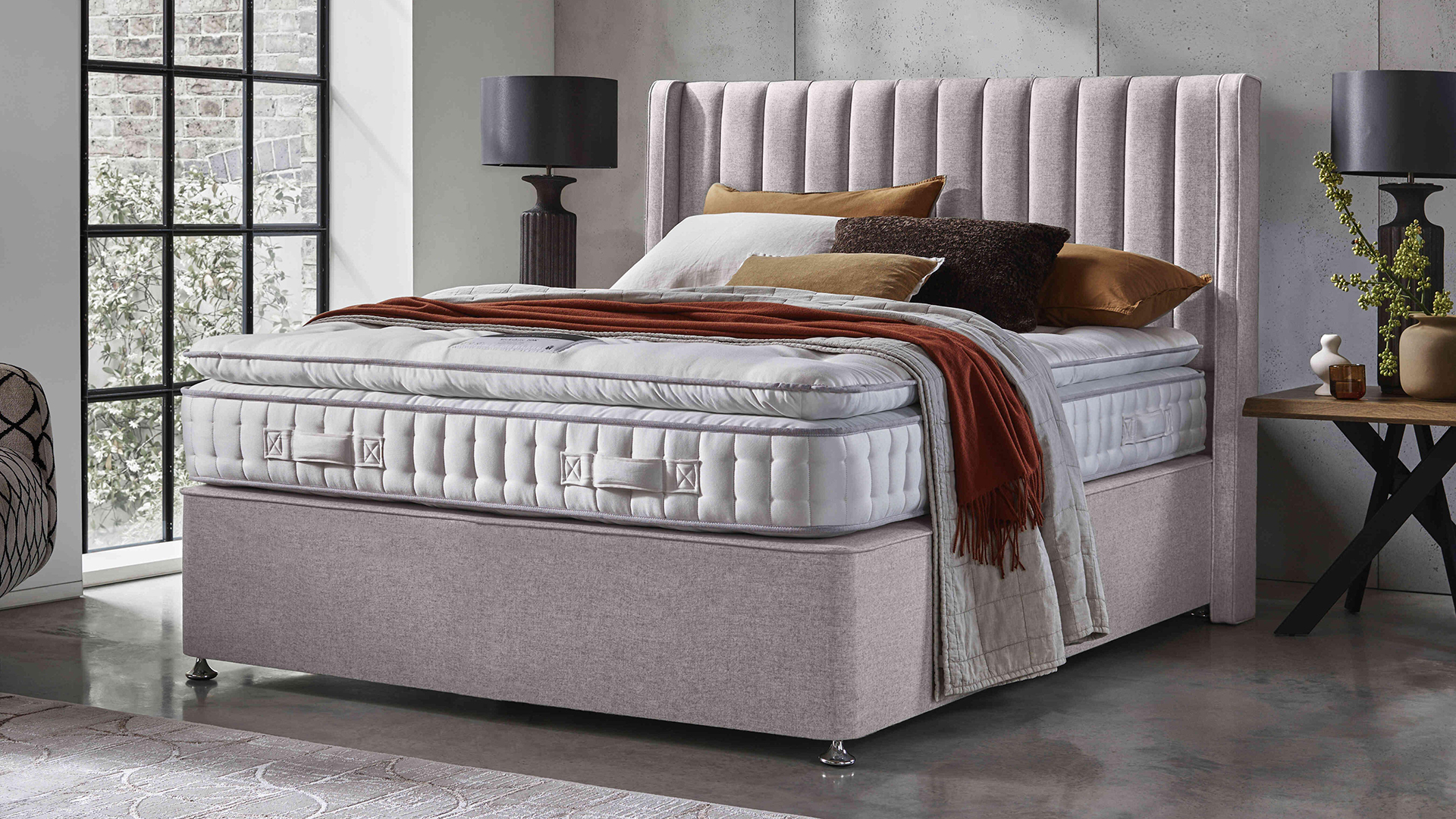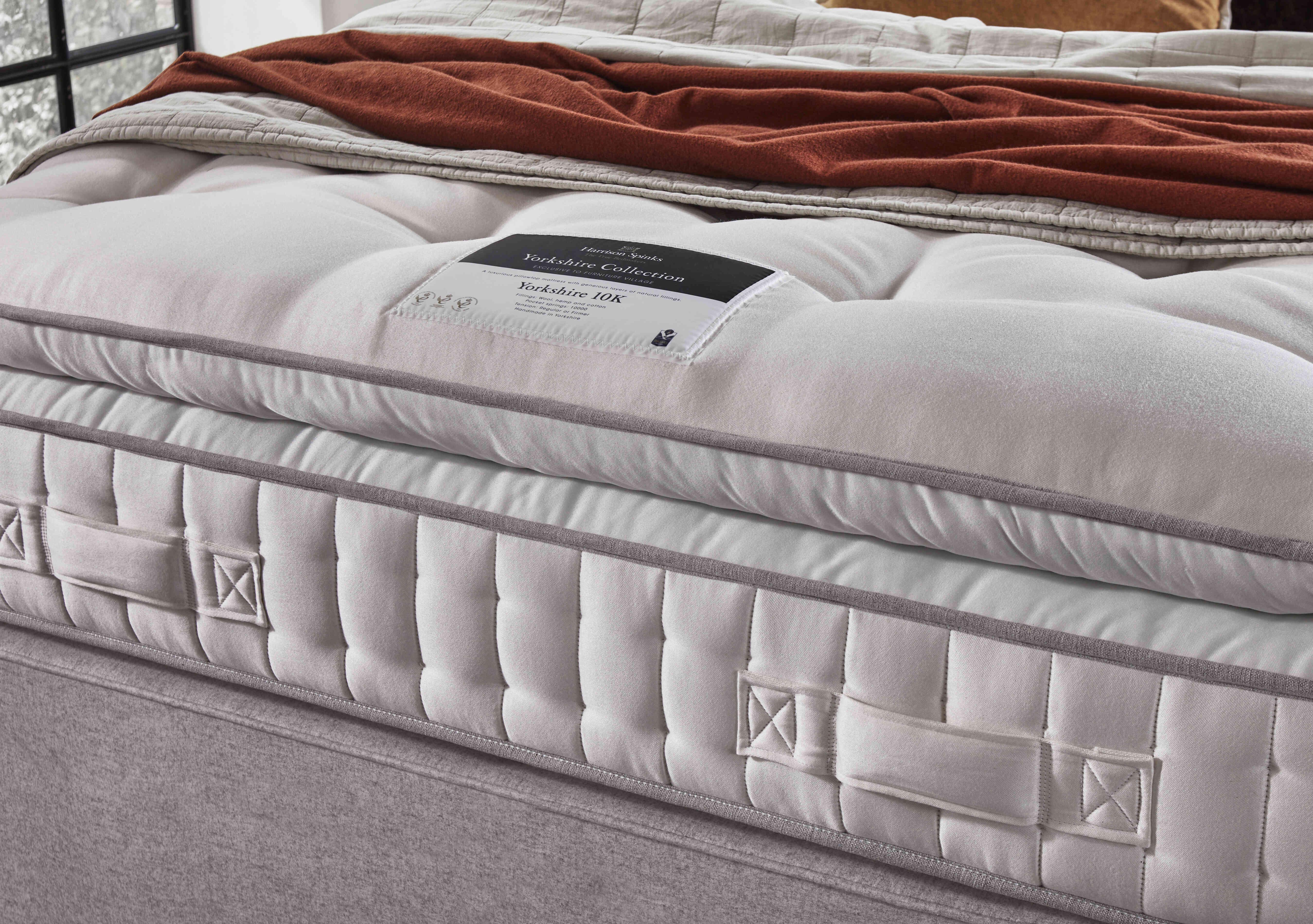5 reasons you don’t need a pillow-top mattress (and 2 reasons why you do)
It might sound luxurious, but is the pillow-top really the right mattress for you?

Pillow-top mattresses are known to provide a comfortable sleep surface right from the very first night. Often spotted on luxury beds, even the word ‘pillow-top’ sounds sumptuous. With all that in mind, you might be wondering why we so rarely feature pillow-top mattresses among the very best mattresses.
What is a pillow-top? It’s worth noting that the term isn’t used consistently across mattress brands. A true pillow-top is a comfort layer that sits above the bulk of the mattress, separated by a strip of fabric. However, some brands will refer to a Euro-top – a comfort layer that sits square to the mattress – as a pillow-top. We're talking about a true pillow-top here. For all of our top recommendations, head to our roundup of the best pillow-top mattresses.
Or if you're not sure if you want a pillow-top mattress or not, read on for a closer look at hte disadvantages (and advantages) of this design feature.
5 reasons not to buy a pillow-top mattress
Below, we'll outline some general issues that can occur with pillow-top mattresses. These problems aren't inherent to all pillow-tops, but they are something to be aware of when choosing a mattress.
1. Durability can be a problem
One of the big advantages of the pillow-top, which we’ll cover below, is the plush cushioned feel it adds to the mattress. However, this extra cushioning is also responsible for one of the most common disadvantages of pillow-top mattresses: a lack of durability. Over time, the pillow-top will start to sag. And when the top has sagged, the mattress won’t be comfortable and you’ll need to look for a replacement.

Durability isn’t an issue across the board. We recommend replacing your mattress every seven to 10 years, and a good quality pillow-top can last that long. But it remains true that once the pillow-top has given out, the entire mattress will probably need to go.
The pillow-top also introduces more seams to a mattress. As seams can tear and break, more seams equal more areas of weakness. If you plan on moving the mattress – to rotate it, for example – go carefully.
Sign up for breaking news, reviews, opinion, top tech deals, and more.
2. It’s hard to create good edge support
Traditional pillow-tops have a bowed look, with an extra strip of fabric separating the top from the rest of the mattress. Because of this, the pillow-top tends to be firmer at the center and weaker at the perimeter. If you use the edge of the bed to push yourself up, a pillow-top is unlikely to offer much assistance.
For better edge support, look for a hybrid with reinforcement around the perimeter. We were very impressed with the edge support in our Saatva Classic mattress review – a hybrid mattress with a Euro-style pillow-top. With a Euro-top, the comfort layer sits directly on the mattress, so you can really feel the benefit of any edge reinforcement in place.
3. Heavier builds might lack support
We’re talking generally here, as some pillow-tops will be built with denser materials that offer better support. However, a traditional pillow-top can sag quickly, and this issue is exacerbated when used by a sleeper with a heavier build. None of our best mattresses for bigger bodies have a true pillow-top (but some do feature Euro-tops).

4. You might need to buy specialist sheets
The pillow-top tends to add a few extra inches of height to the mattress, which means your old sheets might not fit. Instead, you’ll need to invest in a set of deep sheets, and possibly replace your mattress protector. While not a major issue, it's something to keep in mind.
5. Most don't have a "sink" feel
This one is more of a personal preference than a problem with pillow-tops. Pillow-tops are generally used on hybrid or innerspring mattresses, to add some extra cushioning to the supportive bed. Because it’s only a small layer of padding, you won’t get the deep sink of some memory foam mattresses. Although you can technically put a pillow-top on a memory foam mattress, we've never seen the two combined.
2 reasons to buy a pillow-top mattress
It’s not all bad with a pillow-top mattress. Below, we’ve rounded up a few reasons why you might consider this mattress style.
1. You want a balance of support and cushioning
Pillow-tops are typically added to firmer and more responsive innerspring and hybrid mattresses, as the additional layer of cushioning brings some pressure relief without sacrificing support. And they tend to be comfortable from the very first use, so you can often avoid the awkward adjustment period.

However, it’s worth mentioning that this isn’t exclusive to pillow-top mattresses. We were highly impressed with the level of support and softness in our DreamCloud mattress review, and this hybrid has a tight-top finish.
2. You want a luxury finish
There’s something about the bowed look of the pillow-top mattress that signals it’s a premium design, and that tends to be reflected in the sumptuous feel. Many of our best luxury mattress picks have a pillow-top or a Euro-top.
But you don’t need a pillow-top to recreate a hotel feeling in your own bedroom. Instead, consider adding one of our best mattress toppers to your current mattress. This can provide a similar premium finish at a much lower cost.

Ruth is TechRadar’s Sleep Writer. She’s here to help you find the perfect sleep setup for your budget and personal preferences. As well as keeping a keen eye on everything that’s going on in the world of mattresses, she regularly speaks to experts to help you learn how to improve your sleep habits, whether that’s by debunking sleep myths or explaining the science behind it all. Prior to joining the TechRadar team, she wrote features and product guides for new parents hoping to get a decent night's sleep, as well as writing for a variety of online spaces.